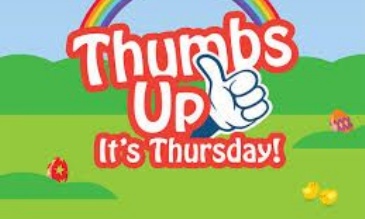Thursday 18th June 2020

Think outside the box activity attached below!!!
Maths I am learning to subtract by taking away (using word problems)
Use the number lines attached or a counting stick if you have one to practice counting back. This will help you with the problem solving today.
When subtracting with word problems the trick is to look out for key words that indicate what to do. For subtraction look out for the following vocabulary and phrases;
How many are left?
What is the difference?
Take away (fly, run or swim away)
Minus
Fewer
Remain.
https://vimeo.com/428791929 Here is a video explaining how to decipher a subtraction word problem.
Complete as many of the subtraction word problems attached below. Make sure you write the full calculation as well, not just the answer.
For example; There are 12 tomatoes, three are rotten. How many remain that can be eaten?
12 – 3 = 9 not just..... 9
English - What is the key vocabulary in the narrative?
Today’s task is to pick out the main vocabulary from the story of The Jolly Postman or Other People’s Letters. I have attached the book as a PDF below for viewing. If you are able to, you may like to print it off to highlight and underline. Or just make notes on a piece of paper instead.
-
Are there any words or phrases that are repeated over and over?
-
Does the author use any language that might be usual in a traditional tale narrative (story)?
-
Are rhyming words or other poetic structures used in this text? See Poetry features saved below.
I have also saved a traditional story word mat for you to familiarise yourself with some of the usual phrases and vocabulary that is often used in traditional tales. You can use this to help you tick off or highlight them if and when you come across them.
You may only find some of these phrases and vocabulary in this story. Remember that The Jolly Postman is inspired by traditional tales and is more of a modern retelling of traditional tales. You may notice other features that you find interesting.
Jolly Postman https://vimeo.com/428785678
RWI
https://www.youtube.com/channel/UCo7fbLgY2oA_cFCIg9GdxtQ
All videos are released at 9:30am and will be available for 24 hours only.
If you are unsure about which set to follow please don’t hesitate to email to ask and I will guide you isla.aitken@ramsgateartsprimaryschool.co.uk
Note: Please feel free to attempt the English tasks above on occasion too.
Set 1
Focus sound: ‘b’ for ‘boot’
Spellings
1) banana 2) brick 3) crab
Sentences
1) Banana on a bus.
2) Crab in a bag.
Set 2
Focus sound: ‘ee’ as in ‘What can you see?’
Spellings
1) seedling 2) feed 3) worksheet
Sentences
1) Feed the sheep green grass and seedling trees.
2) At the end of the week do the worksheet.
Set 3
Focus sound: ‘ew’ as in ‘Chew the stew’
Spellings (look out for other tricky sounds – ‘kn/n’, ph/f and capital letters for names)
1) knew 2) nephew 3) Andrew
Sentences
1) I knew Andrew was your nephew.
2) I grew cashew nuts on a tree and threw them in a stew.
Helpful links for parents and carers https://www.ruthmiskin.com/en/find-out-more/parents/
And don't forget Miss Spurrier’s speed sounds for extra practice (accessible at any time as an option)
RWI Set 1 sounds https://vimeo.com/414752875
RWI Set 2 sounds https://vimeo.com/414764363
RWI Set 3 sounds https://vimeo.com/414761386
Red words
Level 1 Red words: https://vimeo.com/417611100
Level 2 Red words: https://vimeo.com/417629553
Level 3 Red words: https://vimeo.com/417645041
Topic - Continued.... I am learning to use aerial maps and photographs to identify human and physical features
An aerial view is ‘from the air’.
Human features are man made like roads, buildings, harbours, bridges, churches etc.
Physical features are natural such as beaches, forests, some fields, rivers etc.
Take a look at this aerial view video of part of Ramsgate, see what you can recognise and name from above. It might look a little different than it does from the ground. Shout out what you can see and recognise!
https://www.youtube.com/watch?v=1JuKxWNBvLA
Then follow the Amazing Aerial Views Presentation and look at the maps and photographs of different areas and list what you can see.
You can complete this task over two days. Next new Topic task is on Friday.
